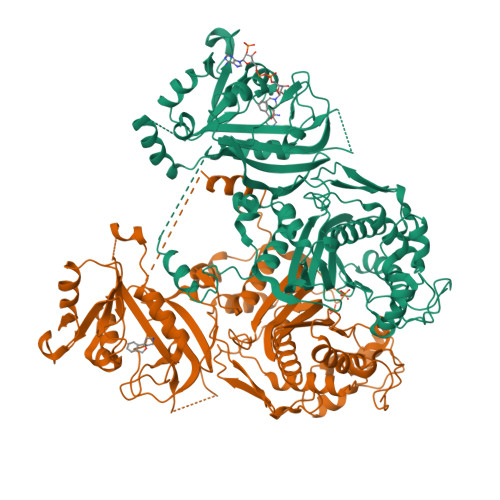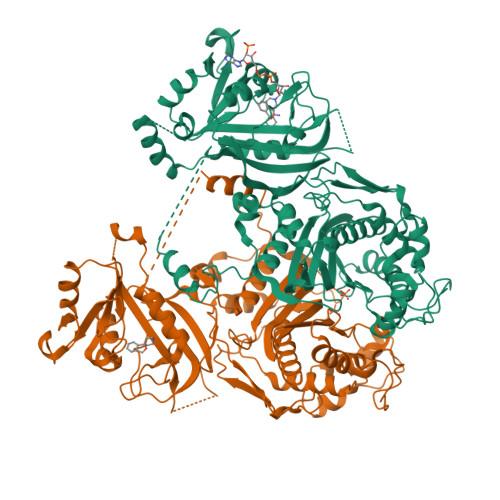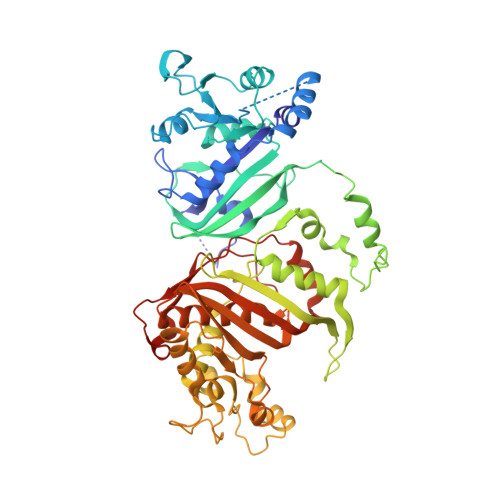Discovery of new non-pyrimidine scaffolds as Plasmodium falciparum DHFR inhibitors by fragment-based screening.
Hoarau, M., Vanichtanankul, J., Srimongkolpithak, N., Vitsupakorn, D., Yuthavong, Y., Kamchonwongpaisan, S.(2021) J Enzyme Inhib Med Chem 36: 198-206
- PubMed: 33530764
- DOI: https://doi.org/10.1080/14756366.2020.1854244
- Primary Citation of Related Structures:
7CTW, 7CTY, 7CTZ - PubMed Abstract:
In various malaria-endemic regions, the appearance of resistance has precluded the use of pyrimidine-based antifolate drugs. Here, a three-step fragment screening was used to identify new non-pyrimidine Plasmodium falciparum dihydrofolate reductase ( Pf DHFR) inhibitors. Starting from a 1163-fragment commercial library, a two-step differential scanning fluorimetry screen identified 75 primary fragment hits. Subsequent enzyme inhibition assay identified 11 fragments displaying IC 50 in the 28-695 μM range and selectivity for Pf DHFR. In addition to the known pyrimidine, three new anti- Pf DHFR chemotypes were identified. Fragments from each chemotype were successfully co-crystallized with Pf DHFR, revealing a binding in the active site, in the vicinity of catalytic residues, which was confirmed by molecular docking on all fragment hits. Finally, comparison with similar non-hit fragments provides preliminary input on available growth vectors for future drug development.
Organizational Affiliation:
National Center for Genetic Engineering and Biotechnology (BIOTEC), National Science and Technology Development Agency, Pathumthani, Thailand.





















